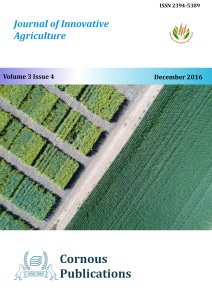
Journal of Innovative Agriculture
Peer Reviewed Open Access Journal
ISSN: 2394-5389 NAAS: 4.05
Submit Manuscript
Peer Reviewed Open Access Journal
ISSN: 2394-5389 NAAS: 4.05
Submit ManuscriptOPEN ACCESS | Published on : 29-Dec-2016 | Pages : 1-10
OPEN ACCESS | Published on : 29-Dec-2016 | Pages : 11-25
OPEN ACCESS | Published on : 29-Dec-2016 | Pages : 26-31
OPEN ACCESS | Published on : 29-Dec-2016 | Pages : 32-36
